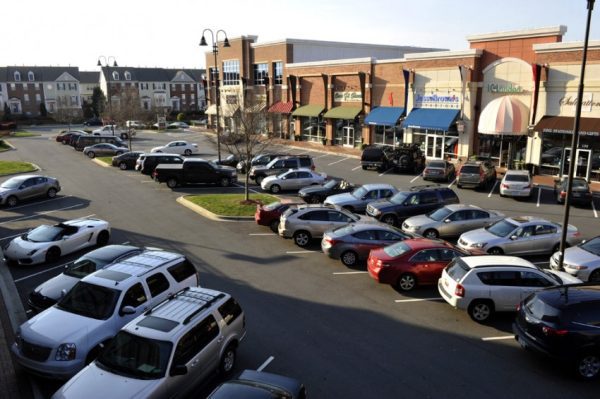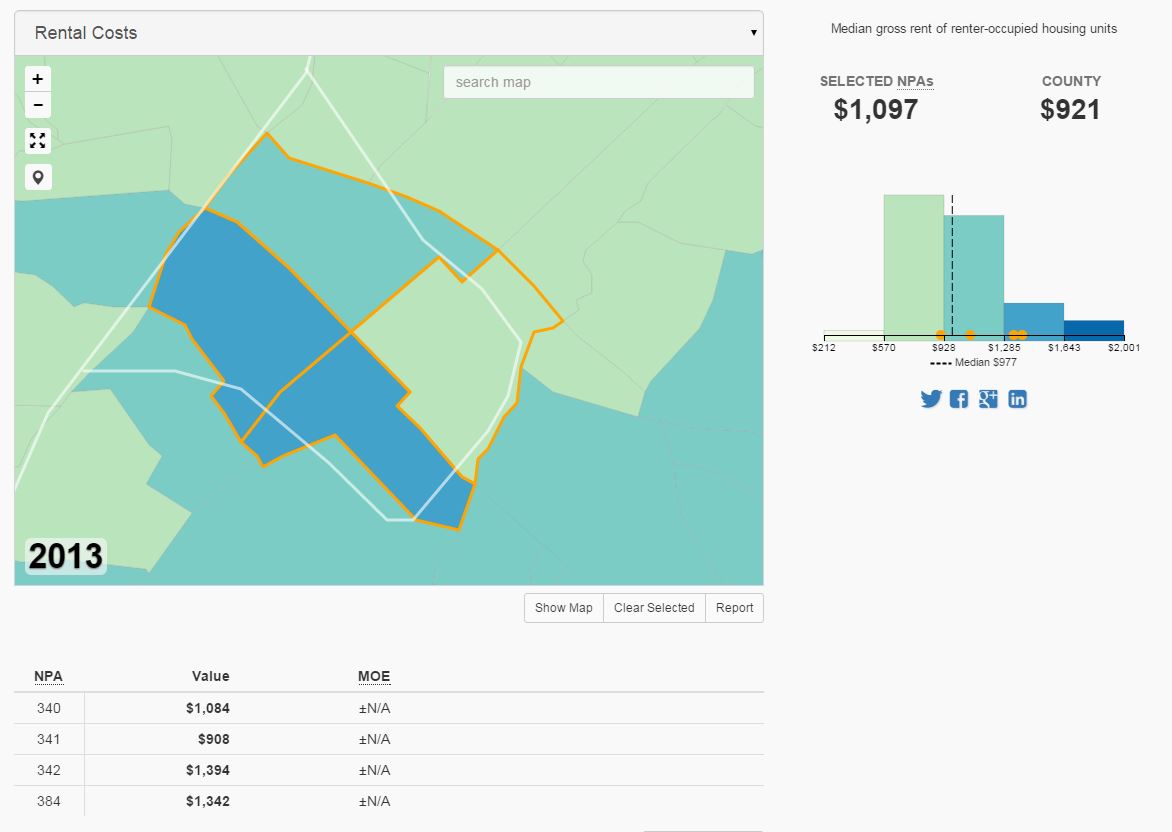Updated data tool analyzes neighborhood trends, comparisons

Residents, community leaders, government officials and local advocacy groups have long recognized the need for vibrant, healthy communities. However, there is no single way to define “healthy community.”
One neighborhood might be considered economically healthy but not environmentally healthy, and vice versa. Neighborhoods with young populations might be facing different challenges than neighborhoods with older populations. The 2014 Charlotte-Mecklenburg Quality of Life Explorer, which went public Wednesday, May 6, is designed to help viewers consider a wide variety of community issues and indicators in exploring and analyzing neighborhoods.
Just a few examples of the kinds of information that can be found:
Learn moreFree, public training sessions will be offered June 3, at 3:30 p.m. and at 6:30 p.m. at the Charlotte-Mecklenburg Government Center, room 267. No registration is needed. |
- Average single-family household daily water consumption decreased from 177 gallons per day in 2011 to 157 gallons per day in 2013, a more than 10 percent decrease.
- 32 percent of all housing units in Mecklenburg County were within a half mile of a chain grocery store in 2014, up from 27 percent in 2011. The number of full-service, chain grocery stores in Mecklenburg County increased from 141 in 2011 to 156 in 2014.
- Houses in Charlotte’s Dilworth neighborhood are getting bigger at a greater rate than houses in Mecklenburg as a whole. Because of new construction and home renovations, the average size of single-family houses in Dilworth increased by 55 square feet in the last two years. That compares to an increase of 17 square feet for the rest of the county.
The new version of the interactive, online tool builds on previous versions of the Charlotte-Mecklenburg Quality of Life Study. The latest version has been redesigned to offer more data and a wider range of uses. New features include:
- An expanded set of data
- Selectable neighborhoods
- Change over time
An expanded dataset
The 2014 explorer includes 82 variables categorized into nine dimensions¨ character, economy, education, engagement, environment, health, housing, safety, and transportation.
The health dimension has been expanded to include low birthweight and prenatal care, both indicators of future health outcomes for mothers and children. Those variables are also related to health access, education, and affordability.
The safety dimension now includes a variable called “disorder-related calls.” Disorder-related calls include reports such as noise complaints, disturbances, suspicious vehicles or persons, drugs and loitering –things that warrant a police call but do not always result in an arrest. Disorder-related calls can indicate a sense of general uneasiness in a neighborhood, but can also signal that residents are concerned and actively reporting problems.
Finally, the city of Charlotte and Mecklenburg County partnered with several community organizations in order to measure community engagement. New variables include active users of Charlotte-Mecklenburg Libraries, as well as people participating in Arts and Science Council activities.
Other new variables include 311 calls, median home sales price, employment, high school graduation rate, and proximity to financial services.
Selectable neighborhoods
Like the 2012 study, the 2014 Quality of Life (QoL) Explorer uses US Census boundaries to delineate 462 specific neighborhoods in Mecklenburg County. These delineations are referred to as Neighborhood Profile Areas (NPAs). Each of those neighborhood profile areas is identified by a specific NPA number.
While most NPAs are representative of their respective neighborhoods, it became apparent that NPAs aren’t always the appropriate scale at which to analyze some questions. For example, someone might want to know “what is my school attendance zone like, or City Council district, or my service area?“
To address this issue, the new Explorer allows the user to scale up, by selecting multiple NPAs at once. The dashboard will return a single value for the selected NPAs, as well as the values for all of the NPAs that make up that particular area. For example, a user wants to know what the average monthly rental costs are in uptown Charlotte, specifically, within the Interstate 277 beltway.
By selecting all four of the NPAs, the user can conclude that the average rent in uptown Charlotte is $1,097 a month, above the county average of $921. However, by looking at the map and table, users can see that the east side of uptown is significantly less expensive, and that NPA 341 (First Ward) has an average rent lower than even the county average. The data dashboard also shows that 31 percent of the housing in First Ward is subsidized, compared with 2 percent countywide.
Change over time
The new QoL Explorer builds on the same variables used in the 2012 QoL report, so users can now see how their neighborhood has changed in the last two years. Once a variable and a neighborhood are selected, the data table will have an arrow indicating whether that variable has increased, decreased, or stayed the same. The table also shows both the normalized and raw numbers. Normalized numbers are useful for making comparisons across neighborhoods, since they take into account different neighborhood sizes and populations. However, the raw number better indicates more subtle changes within each neighborhood.
For example, you might want to look at the number of building permits for new residential homes in the same four uptown neighborhoods. Controlling for neighborhood size, you can see that NPA 384 (Third Ward) has 20 times as much building activity as NPA 341 (First Ward), and the building activity in Third Ward is significantly higher than it was in 2011. By looking at the raw numbers, you can see that there were 28 building permits issued in 2013, 24 more than in 2011.
The ability to look at both raw and normalized numbers, and how those numbers have changed, lets users easily identify opportunities for improvement or see the progress their neighborhood has made.
The city and county will host public training sessions Wednesday, June 3, at 3:30 p.m. and again at 6:30 p.m. at the Charlotte-Mecklenburg Government Center, room 267. The sessions will feature a tour of the Quality of Life Explorer, examples of how a neighborhood could use the data dashboard, and a hands-on tutorial. The sessions are free and open to the public.
Katie Zager is a social research specialist at UNC Charlotte who worked on compiling data for the 2014 Charlotte-Mecklenburg Quality of Life Explorer.
Disclosure: The UNC Charlotte Urban Institute is a partner with Mecklenburg County and the City of Charlotte in creating the Quality of Life Explorer. Owen Furuseth, UNC Charlotte’s associate provost for Metropolitan Studies and Extended Academic Programs – of which the institute is a part – has worked with the city to create the report since 1997.

